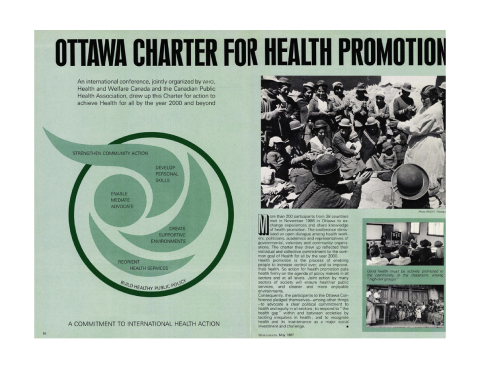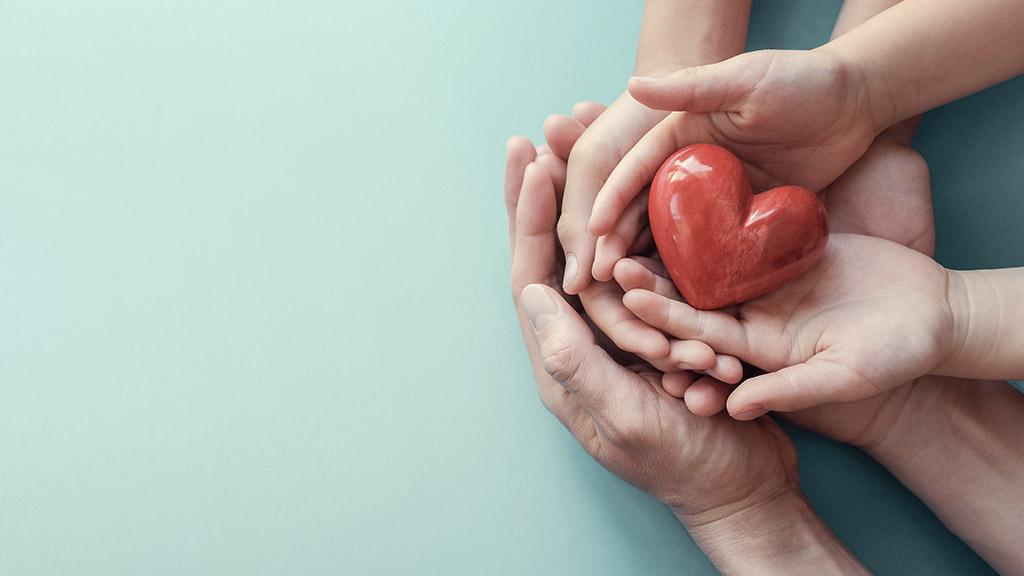
The Ottawa Charter for Health Promotion, Developed by the World Health Organisation (WHO), is a significant document in the field of public health.
It was developed and adopted at the First International Conference on Health Promotion held in Ottawa, Canada, in 1986. The charter provides a framework and guidelines for promoting health and preventing disease globally.
The Ottawa Charter emphasizes that health is a fundamental human right and that individuals, communities, and societies are responsible for promoting and protecting it. To improve and take responsibility for their own health, people need:
- adequate housing
- a liveable income
- employment
- educational opportunities
- a sense of belonging and being valued
- a sense of control over life circumstances
- protection from environmental factors leading to health issues and risks
The Ottawa Charter recognizes that health is influenced by a wide range of factors beyond the healthcare system, and it calls for collaboration among various sectors and stakeholders to address these determinants of health. It has been widely used as a global guiding framework for health promotion initiatives.

Patient-centred care also known as “Person-centred care”, can be described as "providing care that is respectful of and responsive to individual patient preferences, needs, and values and ensuring that patient values guide all clinical decisions." (Institute of Medicine)
Person-centred approaches are widely used in the New Zealand healthcare sector. It can be seen as a 'toolbox' of ways to listen and gather information enabling patients to share health decisions and inform a care plan.
Principles of patient-centred care include:
- respect
- emotional support
- physical comfort
- information and communication
- continuity and transition
- care coordination
- involvement of family and carers
- access to care
(Patient and Person-centred Care, 2022)
Watch: Person-Centred Care Guidelines (5:38 Minutes)
Watch the following video explaining person-centred care.
A holistic approach to health means providing support that looks at the whole person. This approach considers a person's physical, emotional, social and spiritual wellbeing.
Physical Wellbeing
- encourage independence with daily tasks
- work alongside health professionals to help with exercises
- empower clients to make lifestyle changes
- encourage healthy personal hygiene habits and independence
Spiritual Wellbeing
- support connections to nature and their environment
- respect beliefs, values, traditions, and practices that support self-awareness and identity
- follow certain procedures or protocols if asked when providing support care
- ask the person about appropriate personal contact for them, such as touching their head or exposure of body parts
Social Wellbeing
- support activities that have positive social relationships, for example, classes, interests, hobbies, coffee with friends
- encourage communication with friends, whānau, etc.
Cognitive or Mental and Emotional Wellbeing
- maintaining physical health
- managing stress
- helping them keep their mind healthy by doing mind activities such as puzzles, games
- being aware that they are eating a proper diet
- limiting alcohol intake
- getting them social and joining in with activities
- listening to your client without judgement
- responding accordingly and emphatically
- showing compassion
- encouraging healthy sleeping habits
Image referenced from Therapeutic Landscapes paper by Jacqueline McIntosh et al.
Te Wheke also known as the octopus, is a health concept by Rose Pere, a renowned Māori spiritual and academic leader.
This concept recognizes that all aspects of a person's life are interconnected and must be addressed for overall health and flourishing. The following is a breakdown of the elements:
Te Whānau | The family. The body and head represent the individual whānau unit.
Waiora | Wellbeing. The "eye" of the symbolic family unit will reflect total well-being.
Wairuatanga | Spirituality. The creator is a powerful influence, and the uniqueness of being Maori is sustained through this belief.
Mana Ake | Awareness of hereditary from forebearers. Unique identity of individuals and family.
Mauri | Life force. An appreciation of the mauri (life force) of objects, individuals, whānau (family), and every whānau within a community
Hinengaro | The mind. Learning that arouses, stimulates and uplifts is important.
Whatumanawa | Open and healthy expression of emotion. An understanding of emotional development in all areas.
Whanaungatanga | Extended family. The principle of all working to support each other across generations.
Taha Tinana | Physical Wellbeing. Specific physical, material, emotional and social needs related to physical survival.
Ha a koro ma a kui ma | Breath of life from forbearers. Links with heritage passed down by our forebearers.
Learning Checkpoint
Image referenced from Pacific Advance Secondary School.
A model developed by Fuimaono Karl, incorporates the values and beliefs of Samoans, Cook Islanders, Tongans, Niueans, Tokelauans and Fijians.
It encompasses different foundations of life, including family, cultural values and beliefs, spiritual, physical, mental and other. These foundations are interrelated, and health is about maintaining and sustaining balance between these foundations (Pulotu-Endeman, 2001).
In a health and well-being context, it is important to be able to notice any changes in a person's health or abilities, whether they are improvements or deteriorations.
When professionals talk about changes, this means changes in emotional, psychosocial, cognitive, physical, sensory, psychological, or environmental.
Image referenced from Therapeutic Landscapes paper by Jacqueline McIntosh et al.
Te Whare Tapa Whā, a model developed by Sir Mason Durie, shows the importance of balance and encompasses four main elements using the analogy of a house with four walls:
Taha tinana | Physical health
Its first element, taha tinana (physical body), refers to the body and is the physical expression of health and wellbeing.
Taha wairua | Spiritual health
The second element, taha wairua (spiritual realm), reflects the spiritual aspects of wellbeing.
Taha whānau | Family health
The third element, taha whānau (family and community), highlights the need and significance of the family and community to one’s health and wellbeing
Taha hinengaro | Mental health
The last element, taha hinengaro (mental health), describes the importance of the mind.
All four elements are interwoven and interact to support a strong and healthy person. Rochford (2004) suggests if one of these key elements is missing or damaged, then the resulting imbalance may lead to negative health outcomes. To achieve balance and good health, individuals must live in harmony with others, their communities and the spiritual realm. (Jacqueline McIntosh et al, 2021)
Let's look at the following video on how we can apply the principles of Te Whare Tapa Whā into our daily life.

You have watched the video on how you can incorporate the ideas of Te Whare Tapa Whā into your life.
The video suggested a range of activities for each of the elements that make up the whare. Some of these are listed below. Read through these activities and reflect on the following:
- Which of these activities have you tried?
- What would you like to try this week?
- What other activities can you think of that could have a positive influence on your wellbeing?
Ideas for Taha Wairua
- Spend time outside – feel the sun, rain or wind on you
- Practice Cosmic yoga, tummy breathing or Hikitia te Hā
- Stop to notice three small things out your window
- Lie on the lawn and look at the sky
- Write down some values that are important to you
- Write a card, letter or email to someone who’s made a positive difference for you. Tell them why
Ideas for Taha Hinengaro
- Set up a routine for study, play and sleep
- Sing a waiata
- Do some art of craft – painting, drawing, colouring
- Spend some quiet time in your favourite space
- Breathe! Take 10 deep tummy breaths
- Think about how you’re feeling and kōrero about it with someone
Ideas for Whenua
- Sit under your favourite rakau in your garden
- Lie on your lawn to relax
- Look after a plant that needs some aroha
- Share a compliment or kind words with a plant
- Walk outside barefoot
- Sit quietly and listen to the nature around you
- Check in on the plants in your garden, pull weeds near them or give them water
Ideas for Whānau
- Include your whānau in your learning – they might know some stuff!
- Make time to connect with your friends
- Have a hug – awhi it up!
- Help someone with a chore
- Kōrero with someone in your whanau about your whakapapa
- Make someone a kapūti (cup of tea) or a drink
Ideas for Taha Tinana
- Drink some water
- Take a break after an hour of screen time
- Run around the whare twice
- Head off for a walk with whānau
- Put on some music and kanikani
(Ref: Fill My Whare Tapa Whā – https://youtu.be/6In-lfiK30s)
